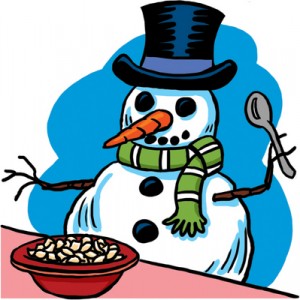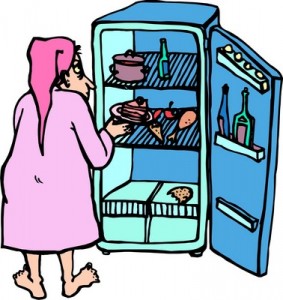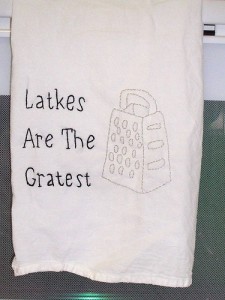 Pork products, fish, beans, cakes with coins, grapes, pickled herring?
Pork products, fish, beans, cakes with coins, grapes, pickled herring?
Sound tasty? Maybe yes, maybe no? So what do they have in common? They’re a sampling of some of the foods people eat on New Year’s to bring good luck.
Food has power and especially at transitional points – like holidays and feast days — many cultures traditionally eat food that has special meaning.
I grew up with the Greek tradition of eating Vasilopita on New Year’s Day. It’s a rich, buttery cake-like New Year’s bread with a coin baked in it.
Named after St. Basil the Great, a theologian who gave all his possessions to the poor, the needy, the underprivileged, and children, tradition has it that whoever gets the piece of cake with the coin embedded in it is supposed to have good luck in the coming year. I once got the coin in the first piece of Vasilopita that was cut in a restaurant in Athens, which blew the hopes of everyone else in the restaurant!
Then again, I distinctly remember my Mother, who is Russian, eating pickled pig’s knuckles on New Year’s for good luck. Try as she might, there was no way she was getting me to even go near them. Vasilopita – even if you don’t get the coin – is a much more appealing choice.
What Not To Eat (Hint: Don’t Look Or Move Back)
Different cultures have various foods that are supposed to be eaten at the stroke of midnight or sometime on January 1 to bring luck, fortune, and plenty (both money and food).
There are also foods not to eat. Things that move or scratch backwards — like lobsters, chickens, and turkeys — are to be avoided because they symbolize moving backward instead of progressing forward. There should be no looking back, setbacks, or past struggles – only things that move forward should be eaten.
And in some cultures, a little food should be left on the table or your plate to guarantee – or at least to hedge your bets – that you’ll have a well-stocked kitchen during the coming year.
Why Tempt Fate — Some Lucky Foods To Consider
There are many New Year’s foods and traditions — far too numerous to list – that are honored by people all around the world.
Don’t you at least want to consider piling some luck on your plate on January 1? Why tempt fate?
Here are some of the more common good luck foods:
- Pork is big. It symbolizes abundance, plenty of food, and the fat of the land (think pork barrel legislation, too). The pig is considered an animal of progress because it moves forward as it roots around for food. Pork products appear in many ways – ham, sausage, ham hocks, pork ribs, and even those pig’s knuckles.
- Seafood, with the exception of the backward swimming lobster, symbolizes abundance and plenty. Fish also symbolize fertility because they produce multiple eggs at a time. It’s important that a fish be served whole, with the head and tail intact, which symbolizes a good beginning and a good end.
- Beans, black eyed peas, and legumes look like coins and symbolize prosperity – as do greens, which resemble paper money.
- Long noodles signify a long life – don’t cut or break them because that could shorten life!
- Cakes and breads with coins or trinkets baked into them are common in many countries. Sticky rice cakes, rice pudding, and fruitcakes also fit the bill in various parts of the world.
- Grapes – in specific numbers — are lucky. Their shape resembles a coin, sweet ones can mean a good month. In some countries twelve grapes are eaten at midnight — one for each stroke of the clock or one for each month. The number and sweetness of the grape is important – for instance, if the fifth grape is a bit sour, May might be a bit rocky. In some places the goal is to eat all of the grapes before the last stroke of midnight, and some countries eat a 13th grape just for good measure. There seems to be an awful lot of hedging of bets all around the world.
So fill your plate with a serving of luck — and, don’t forget resolutions. They’re not quite as tasty as most (not all) food traditions, but they do have longevity — they date back 4000 years to the ancient Babylonians.



